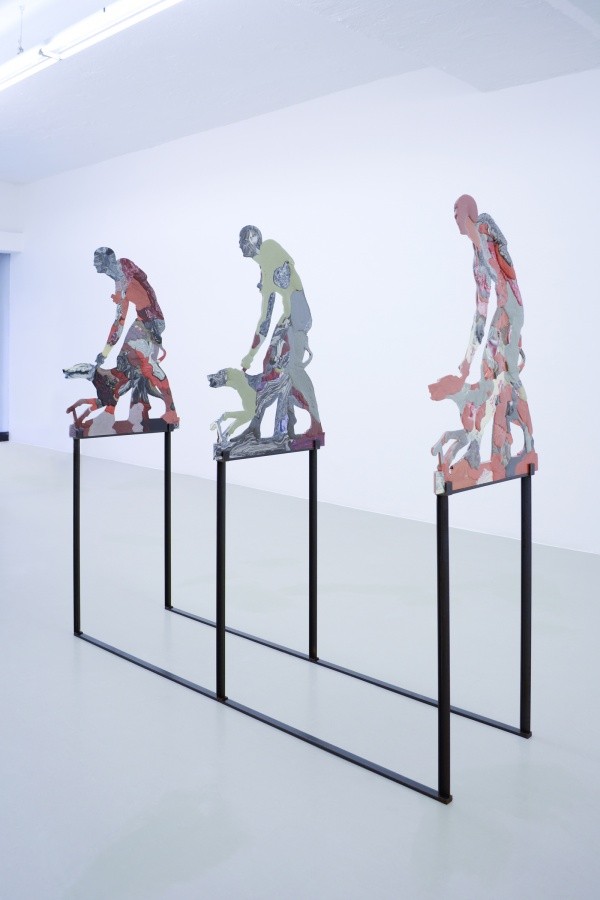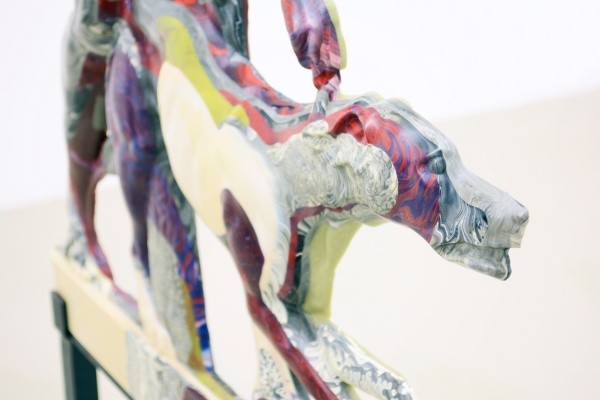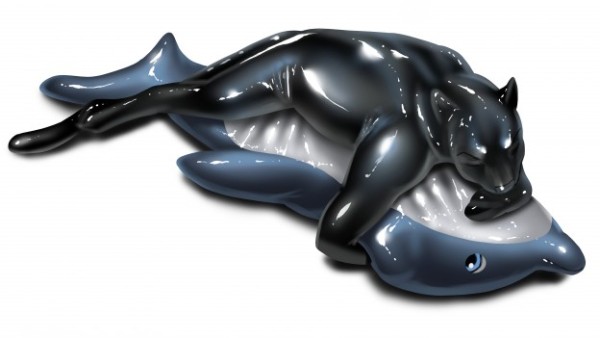Oliver Laric
Thursday, 15 January 2015
at AR/GE Kunst
“Working mainly in the media of sculpture and video, his practice addresses questions concerning how images are appropriated, interpreted, translated and re-circulated in a number of possible versions or iterations. His interest in iconic images, which he extracts from contemporary culture and mythology alike, derives from an attentiveness to the creation and fluctuation of their value and power; a value no longer determined by any uniqueness or truth in the images themselves, but by the collective and often anonymous dynamics that, through distribution, transform them into icons. In this exhibition at ar/ge kunst Laric’s research develops in two complementary directions. These consider anthropomorphism, shape-shifting and forms of hybridization as ways of exploring the relationship of reciprocity and continuity between the human figure and other agents, be they animals or objects; a subject spanning religion, science, folklore, popular and sub-cultures. A new version of the Hunter and His Dog Relief (2014) is presented as a series of bas-reliefs: three copies of the same sculpture by John Gibson (1838), 3D-scanned and hand-cast by Laric himself. The choice of this particular subject, an everyday scene in which Gibson portrayed a boy holding his dog by its collar, derives meaning from its mode of representation, which sets the human figure in a dualistic relationship with the dog. While Laric takes the white marble of Gibson’s detailed neoclassical sculpture as his starting point, he employs a different technique and a different material so as to transform the relationship between the two figures. The man’s former control over the dog becomes a continuity between two bodies, two subjectivities. In his new video Laric further questions this dualistic system of categories (human–animal, human–object, man–woman…), exploring the notion of metamorphosis through a selection of scenes from illustrations and animations from the nineteenth century to the present. As with the sculpture, he chose not to work with the original material and instead commissioned three illustrators to redraw fragments and imagery from Russia, America, Japan and other countries known for their animated films. This act of redrawing isolates, from the original context, the process of shape-shifting so as to visualise the intermediate state of a character’s transformation from one recognisable form to another, a state existing somewhere in-between classifiable states. Laric actively perpetuates this continuous state of ‘becoming’ as a desirable condition that produces a whole range of hybrid subjects freely moving across gender and identities. With a written contribution by Rosi Braidotti. Curated by Emanuele Guidi.”
via Mousse






